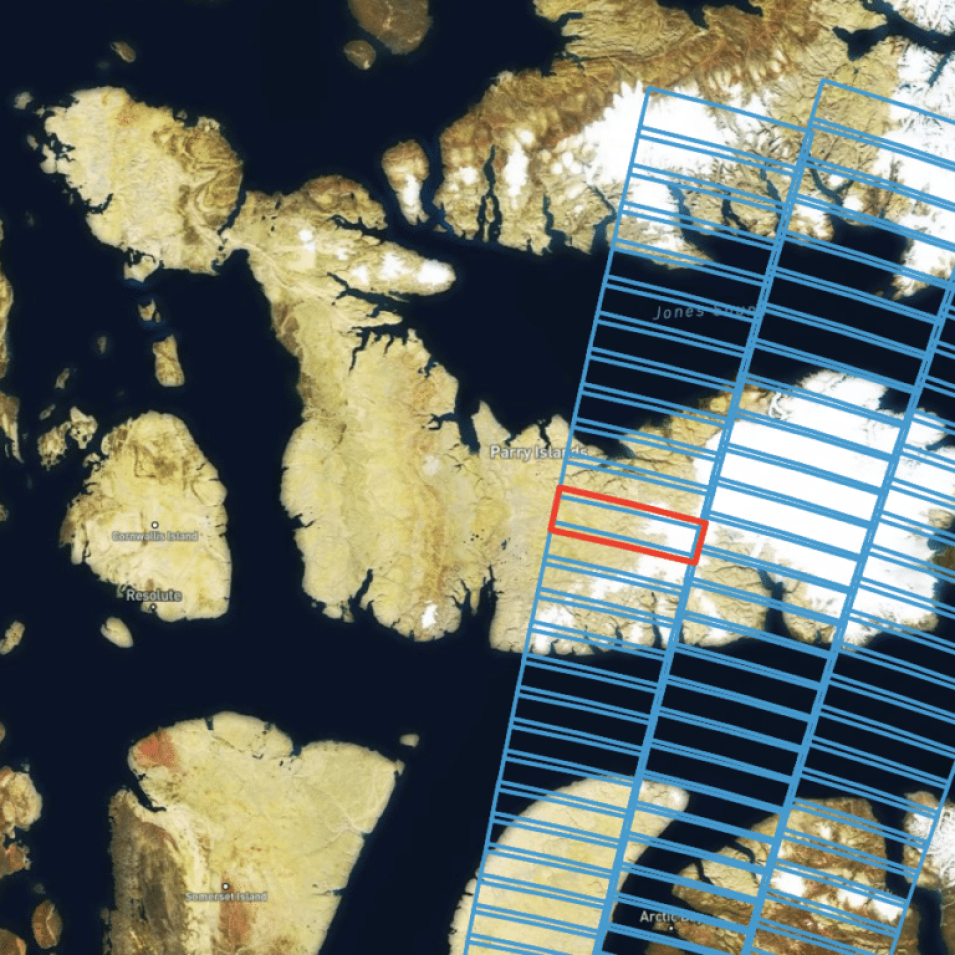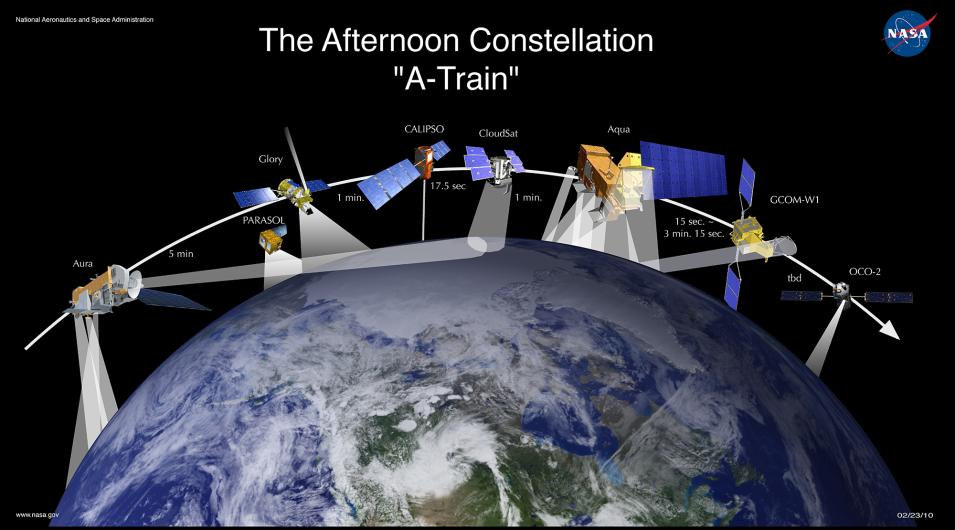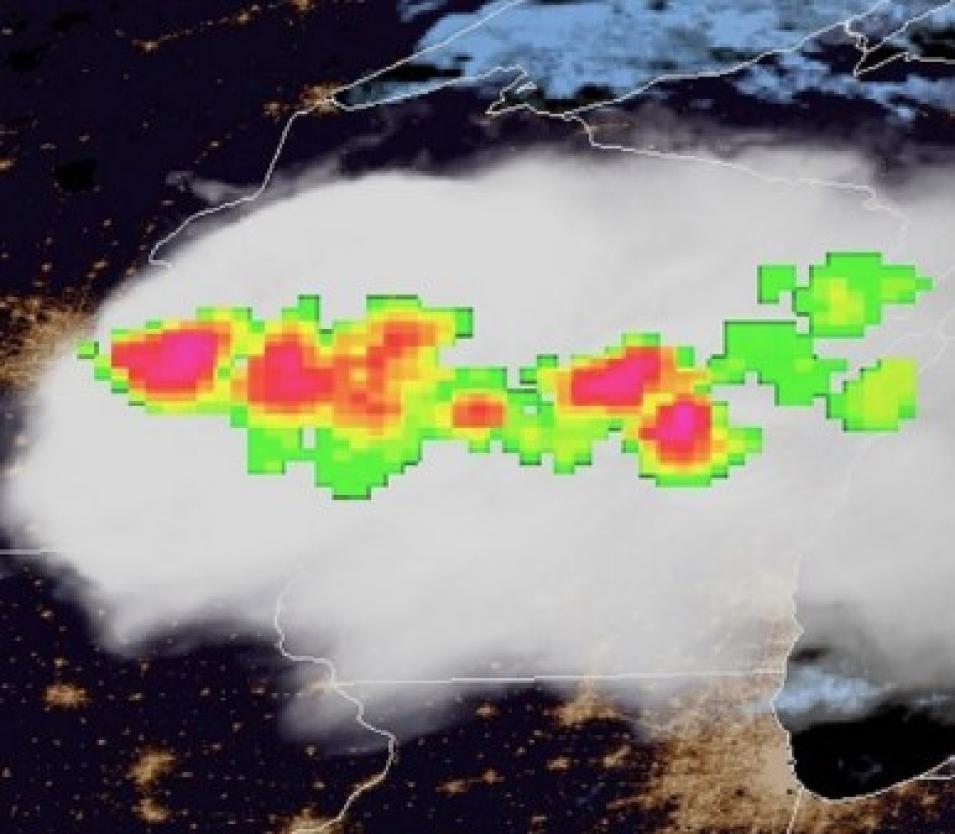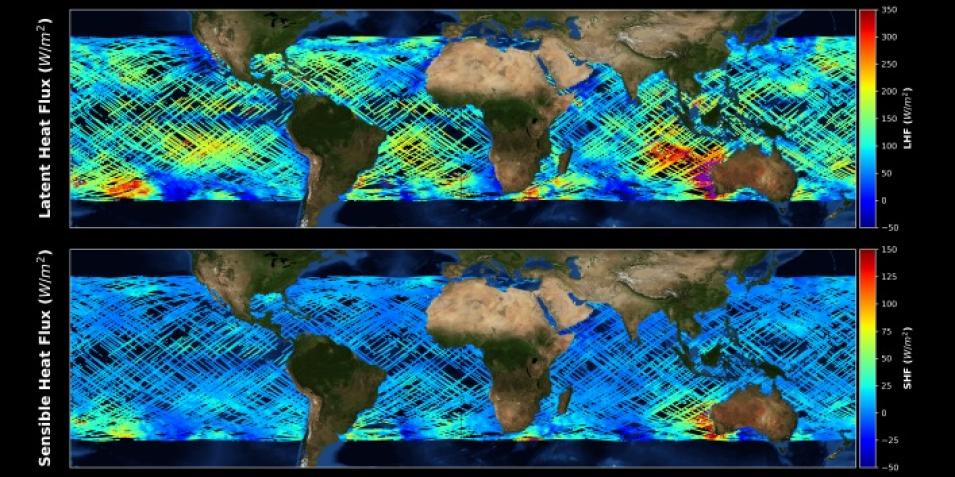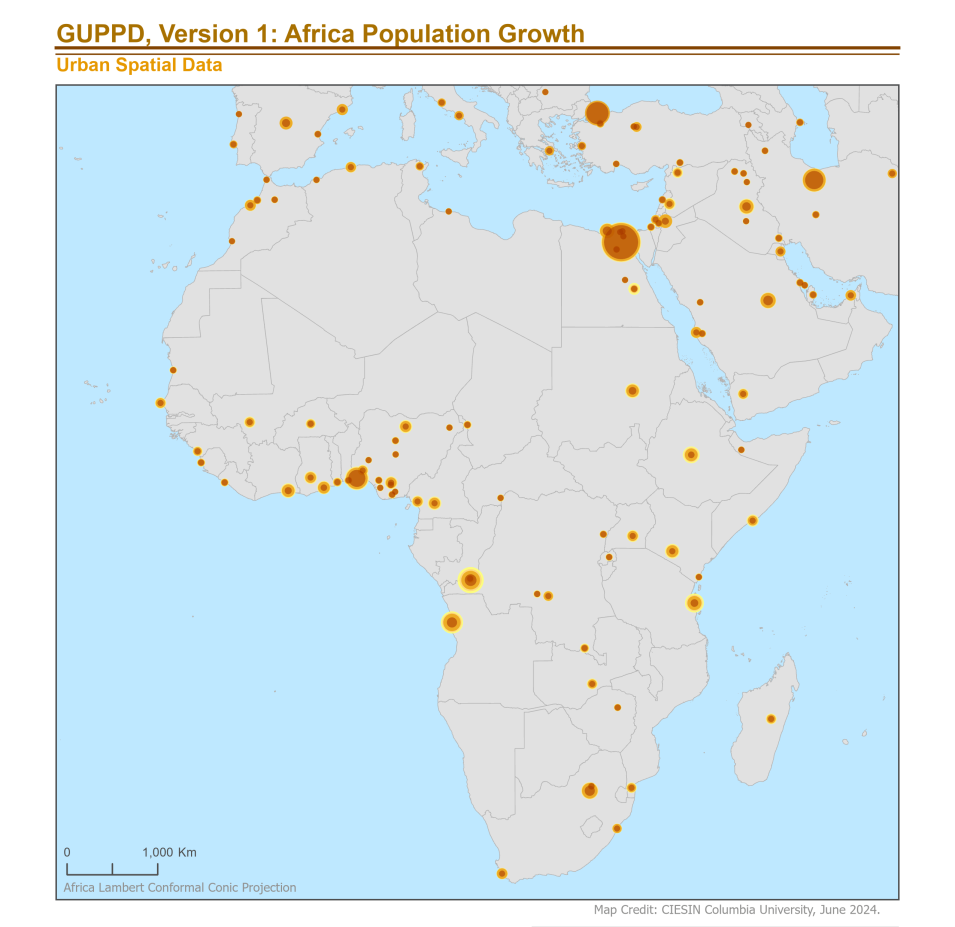The ATL14 dataset is a high-resolution (100 meter) digital elevation model (DEM) that provides spatially continuous gridded data of ice sheet surface height. The ATL15 dataset provides coarser resolution—1 km, 10 km, 20 km, and 40 km—height-change maps at 3-month intervals. These improved versions now have a temporal coverage from January 1, 2019, to December 28, 2023.
Access new ICESat-2 Level 3B datasets and more information
Updated Nimbus-7 SMMR and DMSP SSM/I-SSMIS Sea Ice Concentrations Dataset
NASA's NSIDC DAAC has updated the sea ice concentrations dataset from the Nimbus-7 satellite's Scanning Multichannel Microwave Radiometer (SMMR) and the Defense Meteorological Satellite Program’s Special Sensor Microwave Imager (SSM/I) and Special Sensor Microwave Imager Sounder (SSMIS), Passive Microwave Data, Version 2 dataset through December 31, 2023.
This dataset is generated from brightness temperature data and is designed to provide a consistent time series of sea ice concentrations spanning the coverage of several passive microwave instruments. The data are provided in the polar stereographic projection at a grid cell size of 25 km x 25 km.
Access updated Nimbus-7 sea ice concentration data
Bootstrap Sea Ice Concentrations from Nimbus-7 SMMR and DMSP SSM/I-SSMIS, Version 4 Dataset Updated
The Bootstrap Sea Ice Concentrations from Nimbus-7 SMMR and DMSP SSM/I-SSMIS, Version 4 dataset has been updated to include new data through December 31, 2023. This dataset consists of daily and monthly sea ice concentrations derived from brightness temperature measurements and is available for the north and south polar regions with a temporal coverage extending back to November 1, 1978. The data are gridded to the 25-km polar stereographic projection and provided in two-byte integer format.
Access updated bootstrap Nimbus-7 sea ice concentration data
New Version of the Calibrated Enhanced-Resolution Passive Microwave Daily EASE-Grid 2.0 Brightness Temperature ESDR, Version 2 Dataset Released
Version 2 of the Calibrated Enhanced-Resolution Passive Microwave Daily EASE-Grid 2.0 Brightness Temperature Earth Science Data Record (ESDR) dataset is now available. This new version includes improvements in cross-sensor calibration and quality checking, modern file formats, better quality control, improved projection grids, and local time-of-day processing. It also involves changes in the data stream for the SSM/I, SSMIS, and Advanced Microwave Scanning Radiometer for EOS (AMSR-E) instruments; the addition of Advanced Microwave Scanning Radiometer 2 (AMSR2) data; and changes to the filename structure. Version 2 currently includes data from January 2021 through March 2024.
Access Version 2 ESDR data and more information
New High Mountain Asia 4-km Dynamically Downscaled Meteorological Data Dataset
NASA's NSIDC DAAC released the High Mountain Asia 4-km Dynamically Downscaled Meteorological Data, 2000-2015, Version 1 dataset. This dataset contains simulated meteorological data for the Indus Basin from 2000 through 2015 at three horizontal resolutions (36 km, 12 km, and 4 km) and nine pressure levels spanning 1000 hPa to 200 hPa. The data were generated by using the Advanced Research Weather Research & Forecasting model to dynamically downscale Climate Forecast System Reanalysis data into three nested domains with increasing horizontal resolution.
Access the new High Mountain Asia dataset
New SnowEx23 Mar23 Dataset
The SnowEx23 Mar23 Community Intensive Observation Period (IOP) Snow Depth Measurements, Version 1 dataset is now available. The dataset contains snow depth measurements from five study sites in Alaska collected during the March 2023 IOP as part of the NASA SnowEx 2023 field campaign. The dataset's temporal range spans from March 7, 2023, to March 16, 2023.
Access new SnowEx23 Mar23 data
New SnowEx23 Mar22 Dataset
The SnowEx23 Mar22 IOP Snow Depth Measurements, Version 1 dataset is now available. This dataset contains snow depth measurements from two regions of Alaska collected during the March 2022 IOP as part of the NASA SnowEx 2023 field campaign. The dataset's temporal range spans from March 8, 2022, to March 23, 2022.
Access SnowEx23 Mar22 data
New SnowEx20 Grand Mesa IOP Datasets Released
The SnowEx20 Grand Mesa IOP Lidar and GPR-Derived Snow Water Equivalent (SWE) and Snow Density, Version 1 and SnowEx20 Grand Mesa IOP QSI Lidar Snow Depth Data, Version 1 datasets have been released. These datasets contain rasterized snow depth maps derived from lidar point cloud data collected from Grand Mesa, Colorado, during the SnowEx20 campaign. They also include the lidar point cloud data used for these derivations. The temporal range spans from February 1, 2020, to February 2, 2020.
Access SnowEx20 Grand Mesa IOP datasets
New SnowEx20 Time Series Snow Pit Measurements Datasets
Version 2 of the SnowEx20 Time Series Snow Pit Measurements has been released. The dataset is a time-series of snow pit measurements obtained during the 2020 campaign at locations throughout California, Colorado, Idaho, New Mexico, and Utah. Version 2 updates include SWE algorithm correction, updated snow pit coordinates, and correction of transcription errors. The temporal range spans October 24, 2019, to May 20, 2020. Version 1 of this dataset was retired on July 11, 2024.
Access SnowEx20 time series snow pit measurements datasets and more information
Oak Ridge National Laboratory DAAC (ORNL DAAC)
Carbon Monitoring System Terrestrial Lidar Scans of Mangrove Forests, Everglades National Park, Dataset Now Available
NASA's ORNL DAAC released the Carbon Monitoring System (CMS) Terrestrial Lidar Scans of Mangrove Forests, Everglades National Park, Florida, USA, 2022-2023, dataset. The dataset contains point clouds of 3D mangrove forest structure and volume collected from 10 sites in Everglades National Park. Data were collected during NASA's CMS Blueflux campaigns in March 2022, October 2022, and March 2023. Products were acquired using a RIEGL VZ-400i terrestrial laser scanner, a non-destructive and quantitative method for in-situ 3D forest structure measuring and monitoring. Data are provided in LAS (*.las) format.
Access CMS Everglades mangrove data and more information
